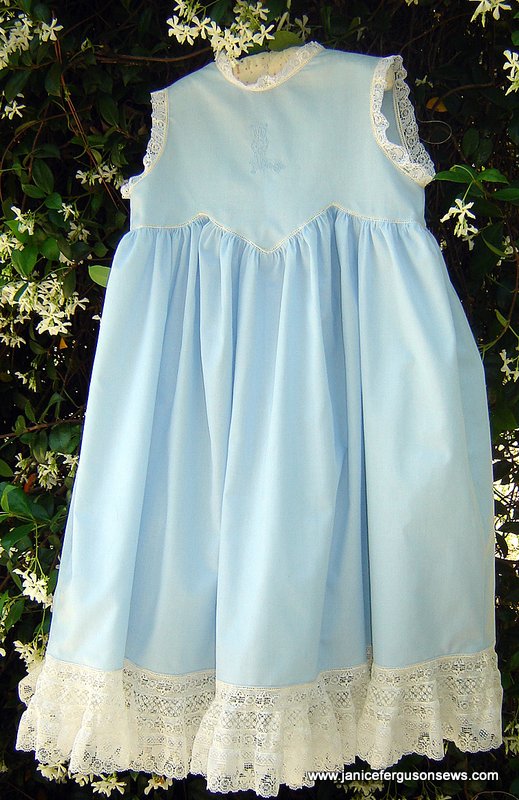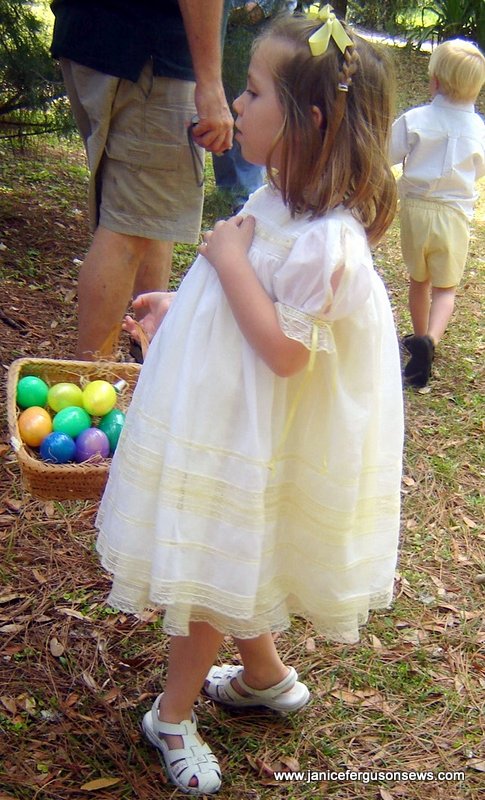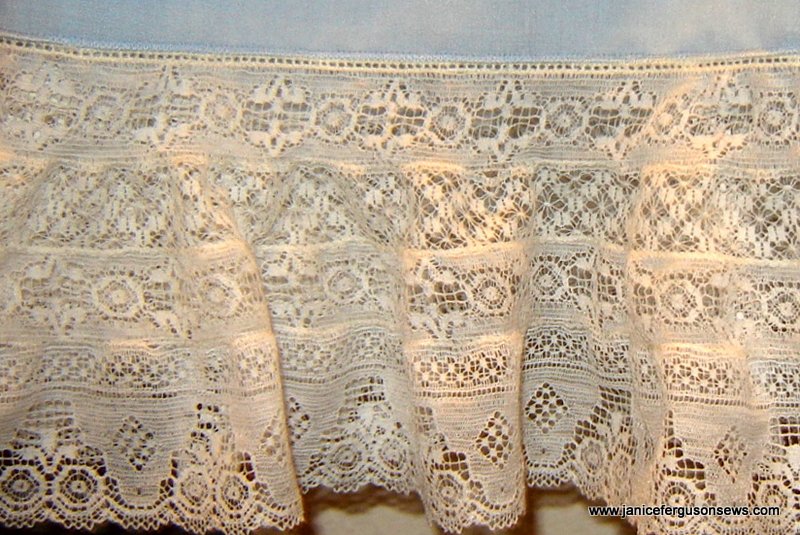Thank goodness for this slip. It was designed for modesty and decency, which is what these undergarments are supposed to provide. But it has been pressed into service as the remedy for Laurel’s too short Easter dress.
When sewing for a child, accurate and up-to-date measurements are as important as your sewing machine.  I know that.  Then how does it happen that I see this child, on the average, twice a week and never manage to find a few moments to measure her?
How does it happen that once again I put this task on her mother, who doesn’t sew and uses a yard stick for such important calculations as center back length?
When my patient and cooperative daughter-in-law answered the call to determine the finished dress length, I was doubtful of the measurement. So I added another 1 1/2″ to the length. But still, the dress is too short.Just like last year, this Easter dress is saved by the slip. It has been lengthened by the addition of three rows of lace insertion. I pondered for some time about whether the lace should be applied flat or with a gathered flounce effect. Which would look better I peeking out from under the dress? I went with the flounce.
The slip is cut to the same length as the skirt but instead of a single row of lace edging, it is extended with three rows of 7/8″ insertion. Of course, some of the width is eaten up with the zig zag joining, but it did extend the length 2 1/2″, enough to give a tea length to this Tea Dress.
While I find the slip less appealing with the addition of the flounce rather than a single row of flat lace edging, the effect at the hemline is very nice.
TECHNIQUE: Because I so dislike the task of distributing gathers, I used a stretch technique that I first used on the sleeves of Rebecca’s Bow Dress, a pattern I did for Martha Pullen about a hundred years ago. After joining entredeux to the bottom of the skirt, the first row of lace was butted to it and zig zagged in place.
But instead of a smooth, even, head to header presentation, I put pressure on the entredeux with my left index finger, holding it back from an even feed. This forces the feed dogs to advance the lace under the presser foot faster than the entredeux.
The result is much like gathering but there is no bulk in the zig zag. Each subsequent row of lace was added in this same manner, with the already attached piece being held back while the new insertion is allowed to flow easily under the presser foot.
I can’t stop myself sharing two important things I learned on this project.
1. This pattern is ill suited for polycottons. Joining the gathered Imperial broadcloth to the entredeux below the shaped bodice was not only challenging, it was only successful to a utilitarian degree. Of course, the Imperial batiste would have worked better but I doubt the reduction in fabric weight would have made enough difference to matter. It fought me every step of the way. The 100% cotton Swiss batiste was much more cooperative.
2. Measure the child yourself or ask someone with experience to do it for you. Instead of measuring my 6 year old granddaughter, I was giddy in NanaLand, enjoying all those fun grandmother activities with her—sewing, reading, gardening, cooking, etc. The annoyance I feel and the time I have spent trying to transform her minidress into a “tea dress” is well deserved.
Now, on to the grandsons’ outfits.





3 responses to “Saved by the slip!”